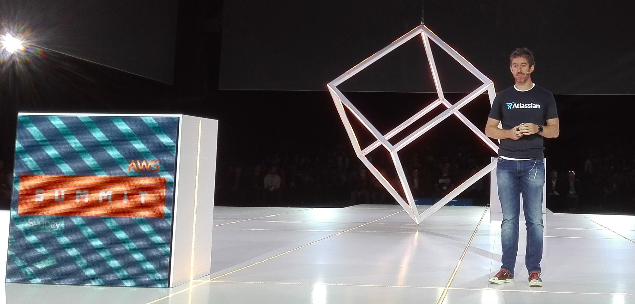The business impacts of cloud technology and the benefits of partnering with start-ups were discussed by a media panel at Amazon Web Services (AWS) Sydney Summit, this month. Panelists included Dan Stinton, Head of Digital (WA) at Seven West Media, Scott Farquhar, the co-founder and co-CEO of Atlassian and David Curran, CIO of Westpac.
Stinton spoke about where start-ups sit in Seven West media’s ‘diverse portfolio’ of offerings and investments.
“We’ve invested in a few start-ups with HealthEngine and Airtasker being the most prominent,” he said. “We are not interested in taking educated bets, we have very specific investment criteria.”
Stinton said that for start-ups to attract investment, they must either have an audience Seven West Media is seeking to reach or be able to take advantage of the media company’s existing audience to grow.
“Take Airtasker, for example,” he explained. “It’s a fantastic company with a great team and culture. Once we invested in [the company], we threw a stack of audience at it to improve its audience. It’s strategic.”
Farquhar also discussed the importance of strategic investments for homegrown software giant Atlassian, noting its acquisition of Trello for US$425m earlier this year.
“Trello fits into our portfolio really well between some of our other products,” he said. “The integration is going really well…and the team has been great, it’s a great culture fit for us.”
Farquhar explained that cultural fit is ‘the first and last thing’ Atlassian looks at when considering an acquisition.
“[When considering] an acquisition, you want…to make sure you bring on a great team,” he said. “We want to make sure any acquisition we do is successful so we don’t do huge ones back to back. We ask, ‘Does it fit with our adjacent markets, does it fit with our business model?’ We want ones that fit with our business model.”
On the topic of strategic alignment, Curran spoke about how the conversation, three years ago, was that “FinTech was going to destroy banking” but the reality has been banks and FinTech businesses working together: “We can move far more quickly working with fintech, but similarly fintech can leverage the scale and safety and history of banks because the regulations, the capital requirements and the risk management are all pretty sophisticated.”
When the conversation turned to the impact of cloud technology on Australian businesses, Farquhar referenced Geoffrey Blainey’s 1966 historical text ‘The Tyranny of Distance’.
“It talked about how for a long time Australia had nothing to ship back to England,” he said. “We couldn’t ship wood back because it was too heavy and we really didn’t have a spice trade. [However,] wool was small enough, light enough and valuable enough to ship to England – and that’s why they say Australia was built off the sheep’s back.”
Farquhar said digital is an opportunity for Australia to not only escape the tyranny of distance but become a leading technology player. Whereas a car manufacturer might be a long way from the markets they wish to serve, Farquhar explained that cloud technology means it no longer takes days to reach a market: “Software is weightless, instant and it can go around the world to every country from Australia. It’s providing an even playing field.”
Despite the advantages afforded by cloud, Curran said not enough people understand it. He also noted that architects and engineers with ‘complete’ cloud experience are hard to come by in the job market. Curran described cloud education as a journey businesses must take their stakeholders on, adding that its incumbent on employers to do more to assist staff with changes in technology.
“You’ve got a bunch of 40+ year olds who, when they left university, believed they had a skillset that would see them most of the way through their career,” he said. “That was fairly reasonable when you left uni in the 80s but the [lifespan] of someone’s skillset is now vastly shorter. [My parents] got through their careers on theirs skills, I’m having to adapt a couple of times along the way. The kids coming out of university now are having to adapt all the time.”
Curran said the question for employers to consider is how they can help people work in an environment where technologies might be out of date before they have finished learning about them and where projects might become obsolete before they ever go live.

